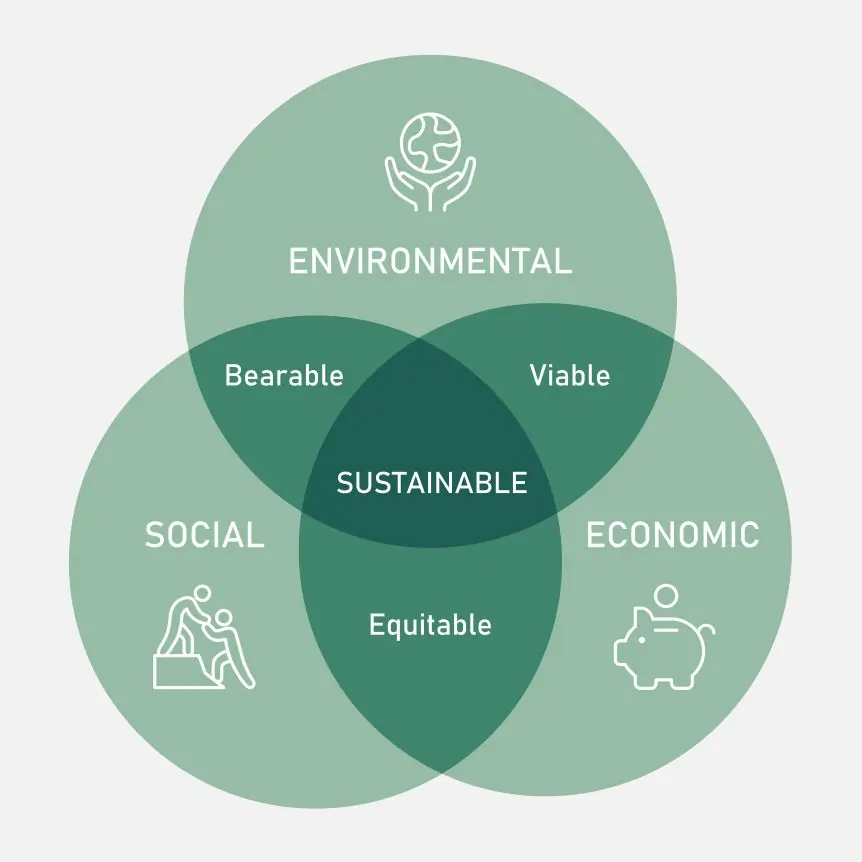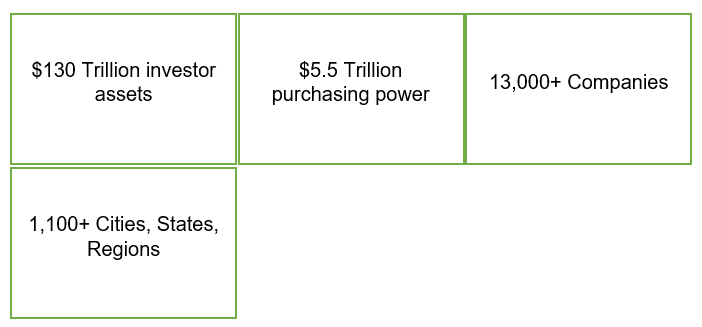Sustainability Reporting – What is CDP and how do Companies report using the CDP framework?
 Share
Share
 Copy Url
Copy Url

CDP vision and mission
“We want to see a thriving economy that works for people and the planet in the long term. We focus investors, companies, cities, and governments on building a sustainable economy by measuring and acting on their environmental impact.”
CDP – What they do
The CDP works on the idea that “you cannot manage what you don’t measure” and so the organization helps thousands of companies, cities, states, and regions measure and manage their risks and opportunities in three specific areas:
- Climate Change
- Water Security
- Deforestation

As the highlights suggest, the CDP has some impressive numbers that convey their growing influence in sustainability reporting and achieving higher engagement on environmental issues worldwide.
As per the CDP, over 680 investors with USD 130 trillion in assets requested companies to disclose their environmental impact through CDP with specific information on climate change, water security, and deforestation.
The CDP also goes beyond investors and looks at suppliers, with over 200+ major buyers with a combined purchasing power of USD 5.5 trillion asking their suppliers to disclose environmental information through CDP. So far, this has resulted in over 13,000 companies reporting on climate change, water security, and forests through the CDP, in addition to over 1,100 cities, states, and regions doing the same.
So, what does the CDP do with the disclosures? Essentially, every year, the CDP collates the information supplied to them and uses an independent scoring methodology to ‘rank’ companies and cities based on their environmental transparency and actions. These scores can then be used by investors and other interested stakeholders to inform their decision-making process. CDP releases its ‘A-list’ every year, which is a list of the companies that scored the highest and they tend to have large corporations with comprehensive, transparent, and holistic approaches to managing their environmental impacts.
Companies that score high can position themselves better by having an advantage over peers. Another benefit of disclosing environmental information through CDP is that companies are able to benchmark their performance internally and take necessary action to improve every year, based on the information now available to them.
It is significant to note that the CDP’s focus is on carbon emissions, water usage, and deforestation. That is, if a company wishes to report on social and governance factors, it would need to use a secondary framework such as the GRI Standards, for example. Therefore, it is not uncommon to see sustainability and annual reports using multiple frameworks such as CDP, GRI, or IR to disclose material information to their stakeholders.
How do companies disclose through CDP?
The CDP has 3 questionnaires, one each for Climate Change, Water Security, and Forests. These questionnaires are quite complex and with recent updates, may be more than 80 pages and over 200 questions each. Each of the questionnaires was scored using different methodologies and has different sections with questions that vary from general in nature to sector-specific. Naturally, this can pose some challenges for companies, especially those new to CDP disclosures.
The challenges faced by companies
As one can imagine, answering questionnaires of that size accurately and comprehensively is easier said than done. Companies have spent significant resources in human hours and finances to repeat this process every year. To achieve high scores, companies go to significant lengths by hiring the right talent with expertise in sustainability and measuring metrics, in addition to using software and other technologies to manage emissions and track data.
The CDP Score
As mentioned briefly earlier in this blog, the CDP scores are published regularly and each of the 3 focus areas uses different methodologies. All these metrics show a company’s understanding and implementation of climate-related changes.
However, the CDP grading itself falls under the following categories:
- A and A- : These are the highest grades/rankings that can be achieved via CDP and suggest the ‘leadership level’ of the company, city, or organization. The A-list tends to include corporations that are leaders in their line of work/industry.
- B and B- is Management level
- C and C- are Awareness level
- D and D- are Disclosure level
- F is for companies or entities that have failed to provide sufficient information to be evaluated
Some of the companies that have been a part of CDP’s A-list include the likes of Apple, Microsoft, and Walmart. However, it should be noted that companies that got an “F” don’t necessarily mean that the organization does not mitigate impacts on climate change or hasn’t kept track; rather it could just mean that the organization, for whatever reason, was unable to get the information to CDP in the stipulated time. Further, the actual scoring is done by CDP-certified and trained third-party independent partners to ensure transparent and unbiased scores.
All of this points toward the need for companies to take special care while filling up the questionnaires. CDP provides guidance in the form of documentation and other resources in addition to workshops and online sessions to help companies. In addition to this, companies need to have the expertise to be able to use their CDP disclosures and framework in combination with other ESG standards to be able to write sustainability reports in a transparent manner.
This can be a difficult and complex process which is why many organizations and businesses hire specialized agencies that have the expertise and experience to create content and visuals for business reports. One such agency is Report Yak, which conceptualizes and creates compelling content and visually stunning designs to ensure that your sustainability report stands out and conveys your company’s environmental actions to stakeholders.
Check out some of our award-winning reports here or feel free to reach out to us to discuss your next report!
Related Posts
-
See How Components of an Annual Report Drive Business Confidence
annual reportAnnual Report design
+7
Jun 24, 2025Share
Copy Url
Latest GRI Updates – What Companies Need to Know
Annual Report designannual reporting
+12
Jun 10, 2025Share
Copy Url
An Informative Guide to the CDP Scoring Methodology – 2025
Annual Report designEnvironmental sustainability
+8
Jun 4, 2025Share
Copy Url


